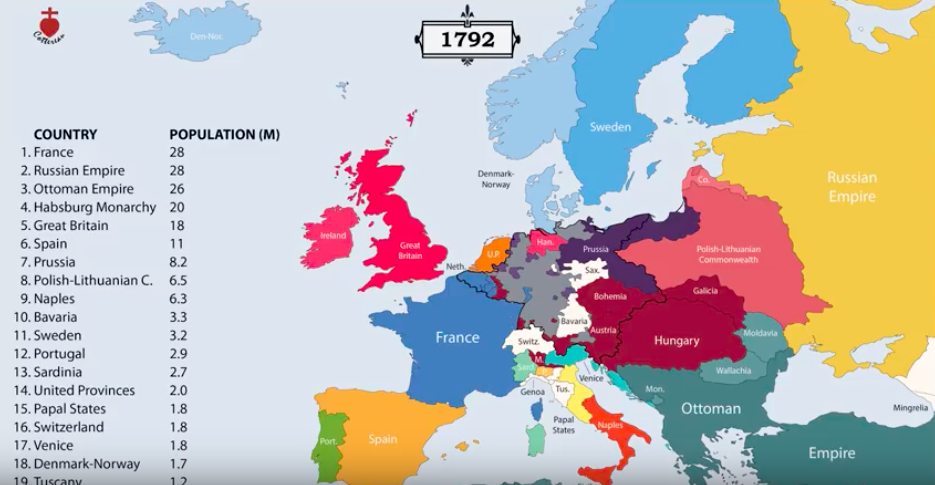
What does Europe's future look like? In geopolitical times such as these, someone might ponder such questions as: "In what shape will the European Union make it through the century?" However, as any historian of Europe knows, this continent has seldom had an easy time: European history is a history of rebellions, conquests, alliances made and broken, and wars aplenty — a significant piece of the rationale behind the creation of organizations like the European Union in the first place. Therefore, the division of Europe by many groups and individuals who've laid claim to pieces of it has seldom held steady for long over the past 2500 years, as you can see on the animated map.
The Roman Empire managed to paint the map red, literally, in the 2nd and 3rd centuries; yet, during all eras before and after it looks as multicolored as it was politically disunited. Earlier, Europe was home to peoples with names such as the Gauls, Celts, Iberians, and Scythians, as well as empires such as the Achaemenid and Seleucid Empire.
However, after the First World War, — and the dissolution of such entities like Austria-Hungary, the Ottoman Empire, and the Polish-Lithuanian Commonwealth — the labels begin to look more familiar. Most of us will remember the event marked by the last significant change to the map, the end of the Union of Soviet Socialist Republics.
The map's animation starts in 400 BC and ends in 2017 with Europe as a collection of nation-states, each of which we now review as not just politically but culturally distinct. However, watching the full two-and-a-half-millennia time-lapse reminds us that every European country has broken off from, joined with, or otherwise descended from many other places, most of which have ceased to exist. In the 21st century, we often hear Europe described as essentially unchanging, stuck in its ways, ossified, and an evening spent watching the proceedings of European Union bureaucracy would hardly disabuse anybody of that notion. But wouldn't observers of Europe have felt the same way back in the heyday of Rome?












COMMENTS